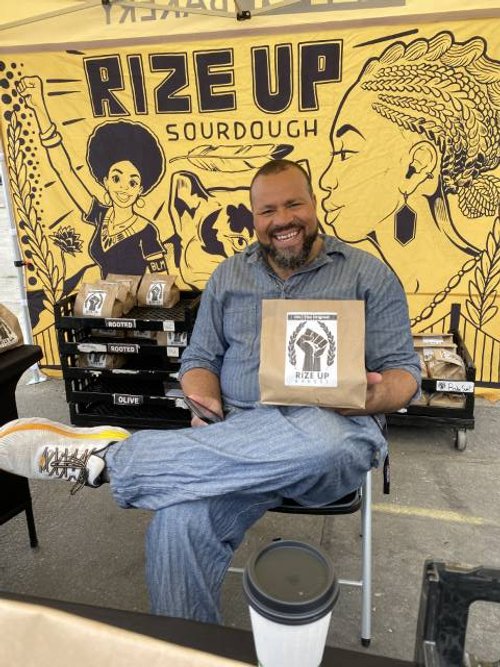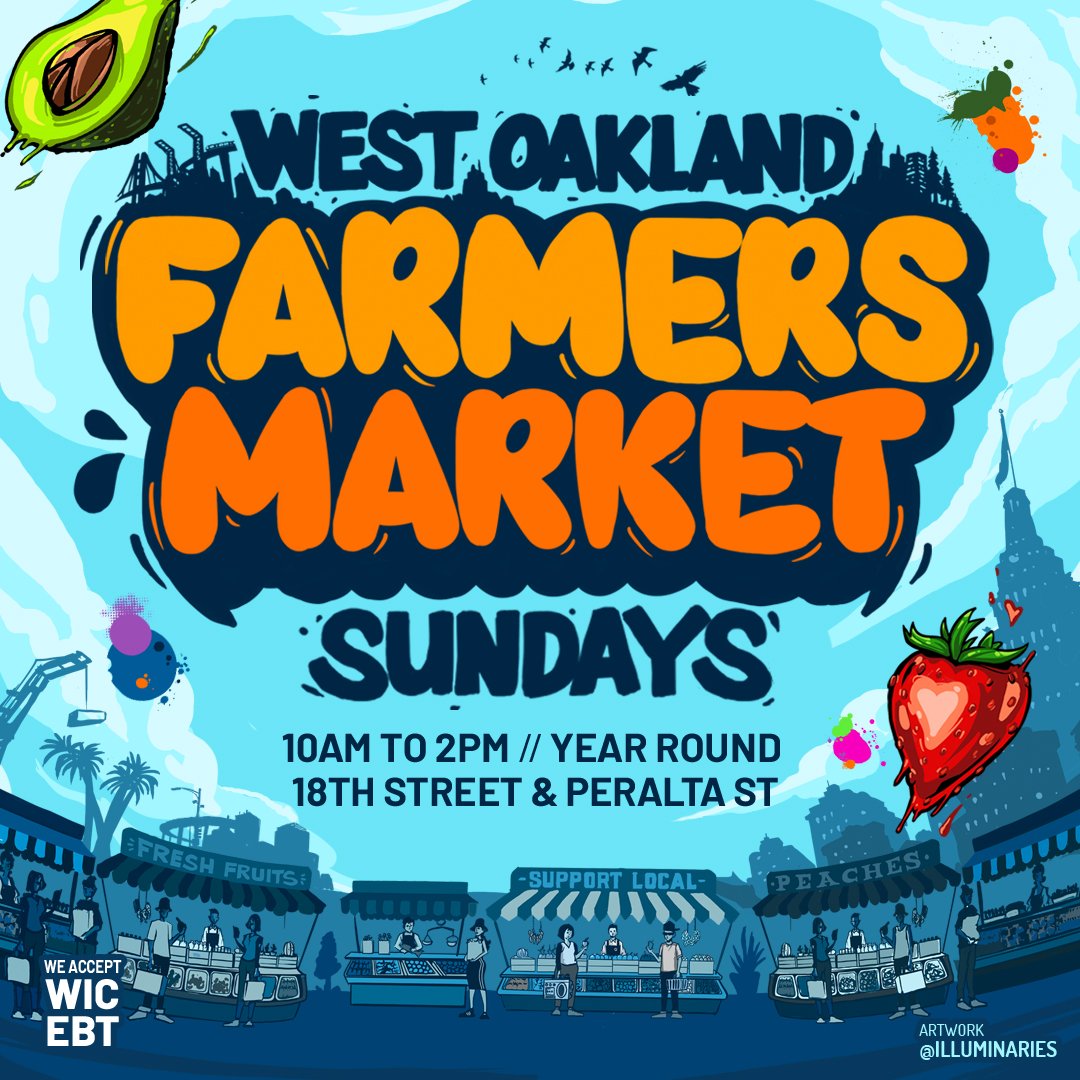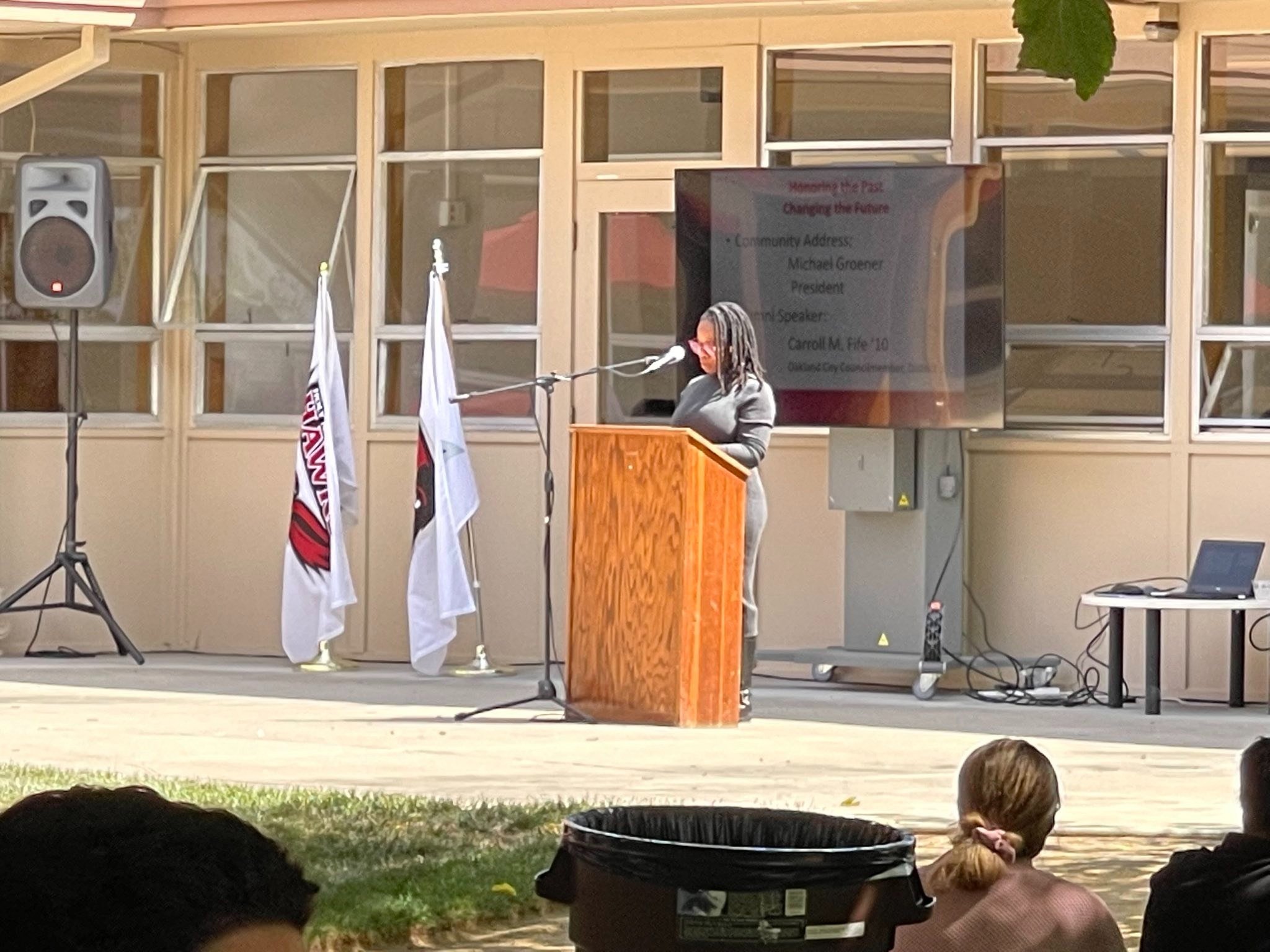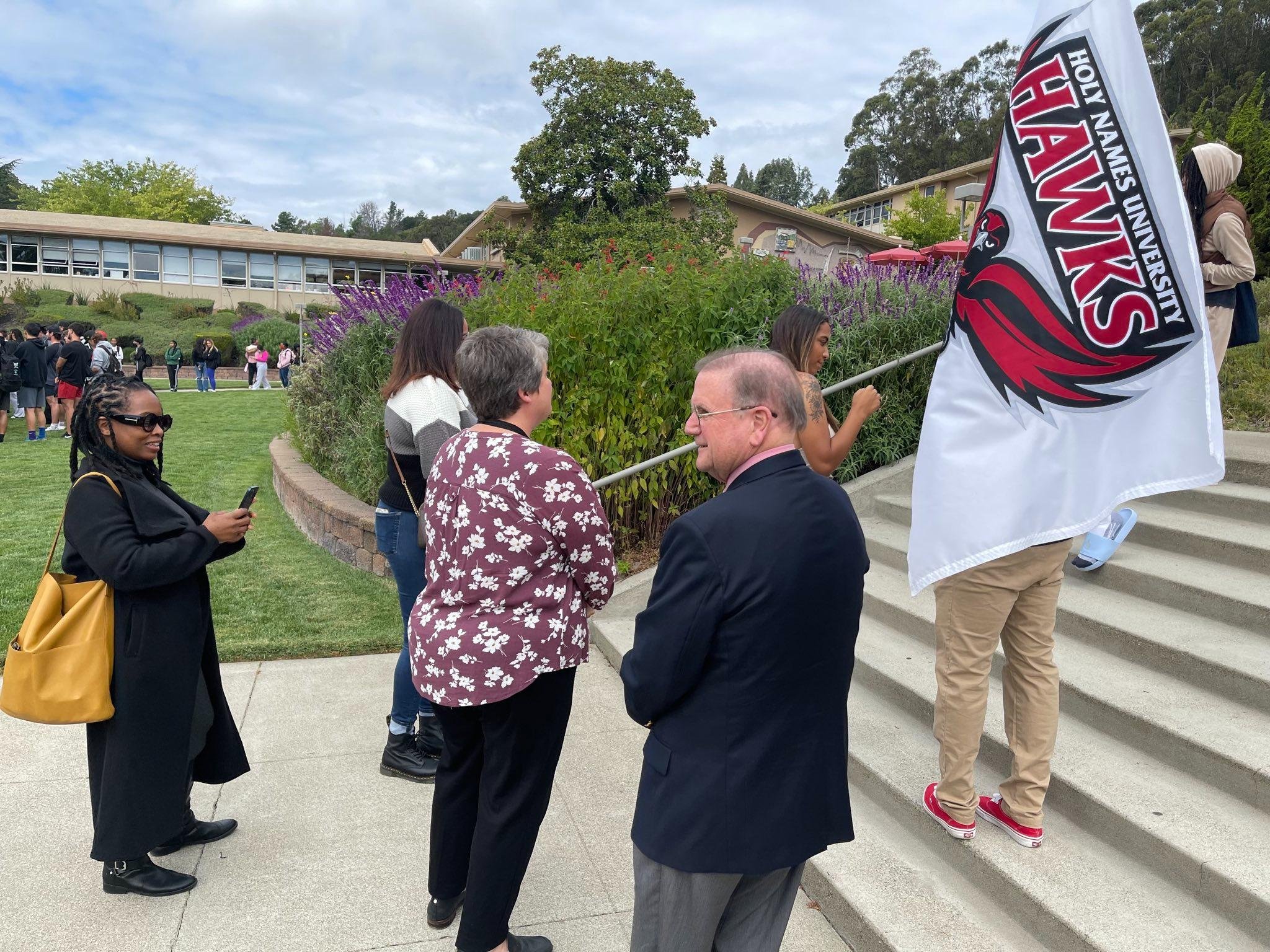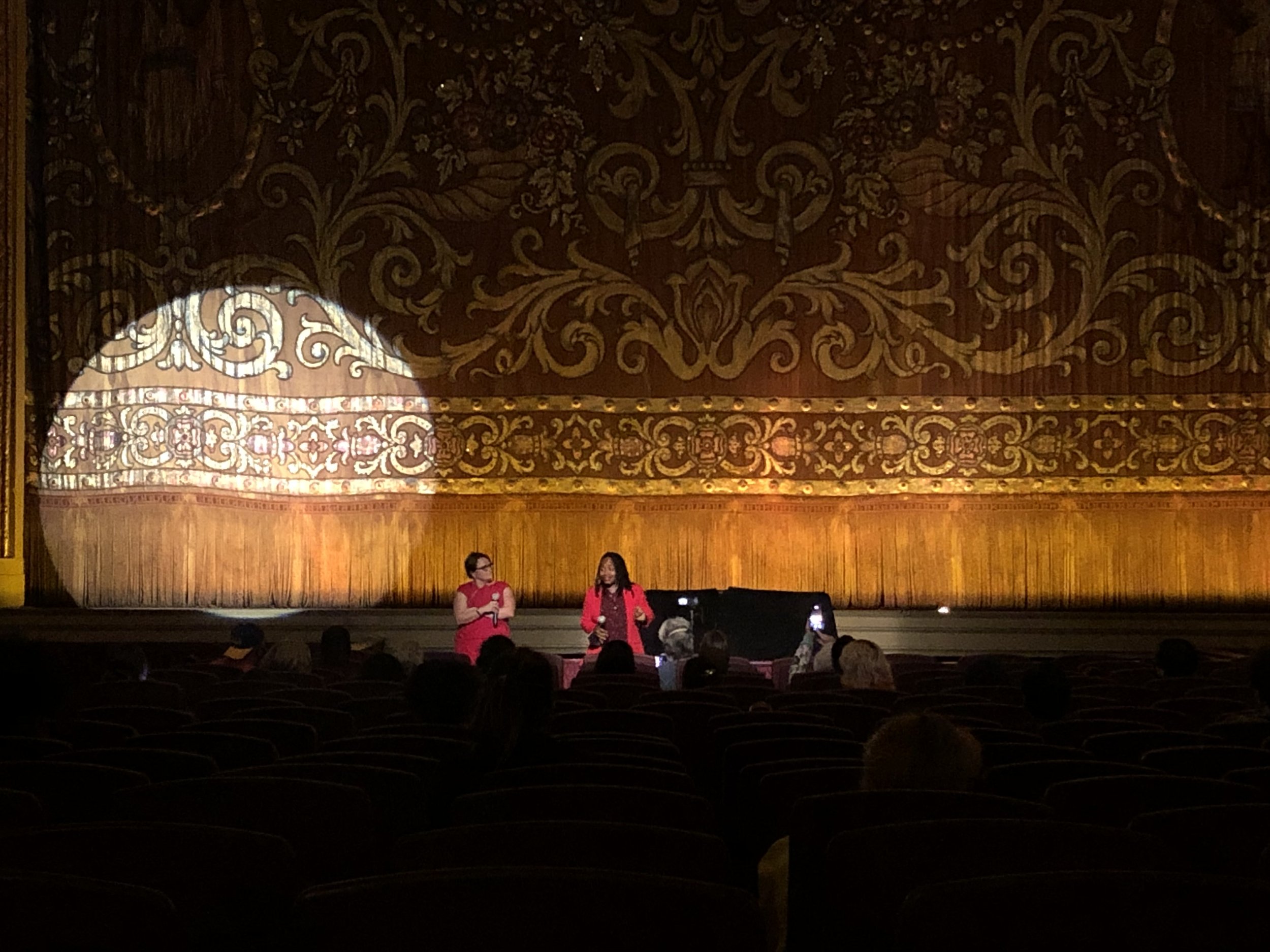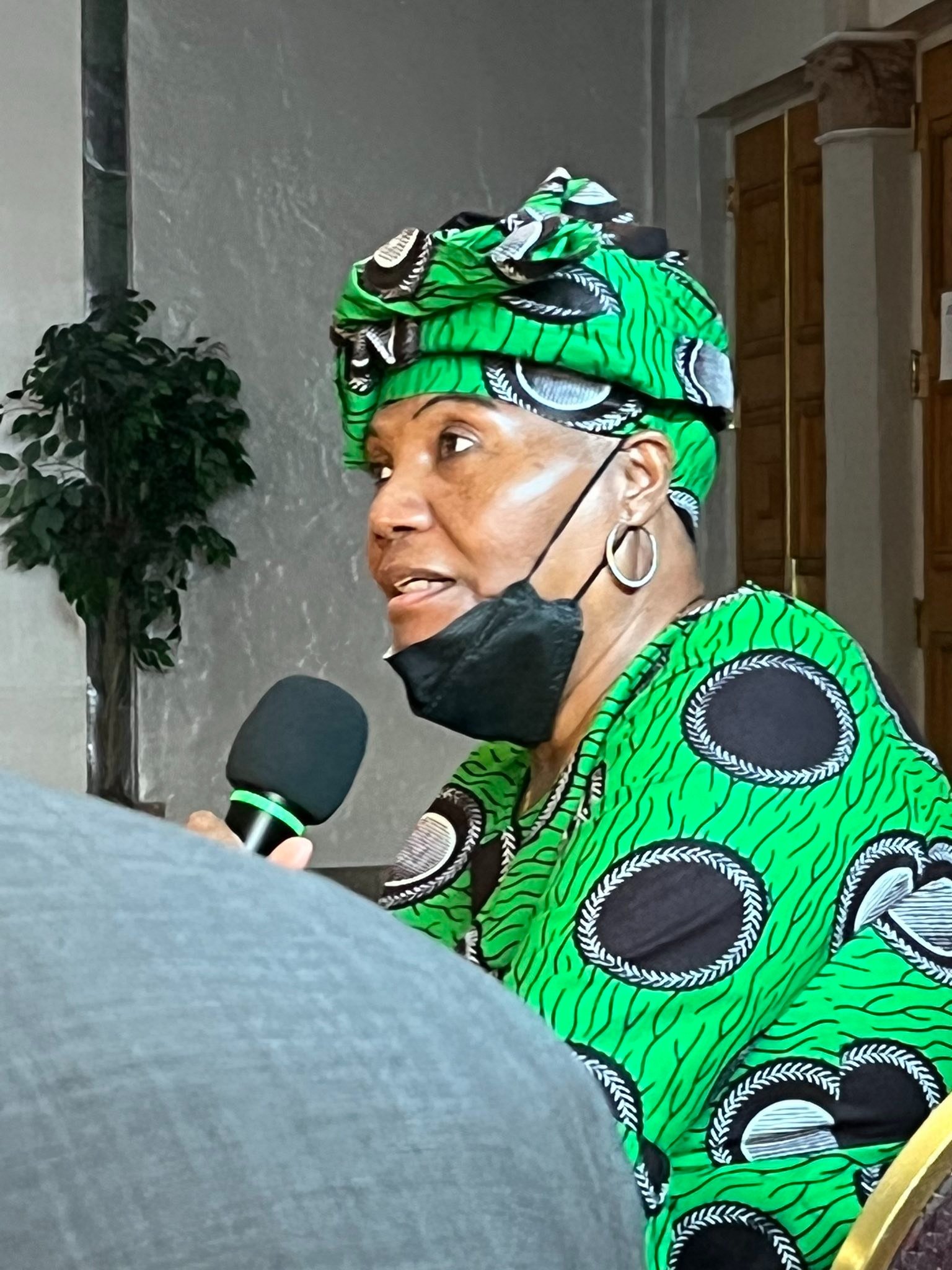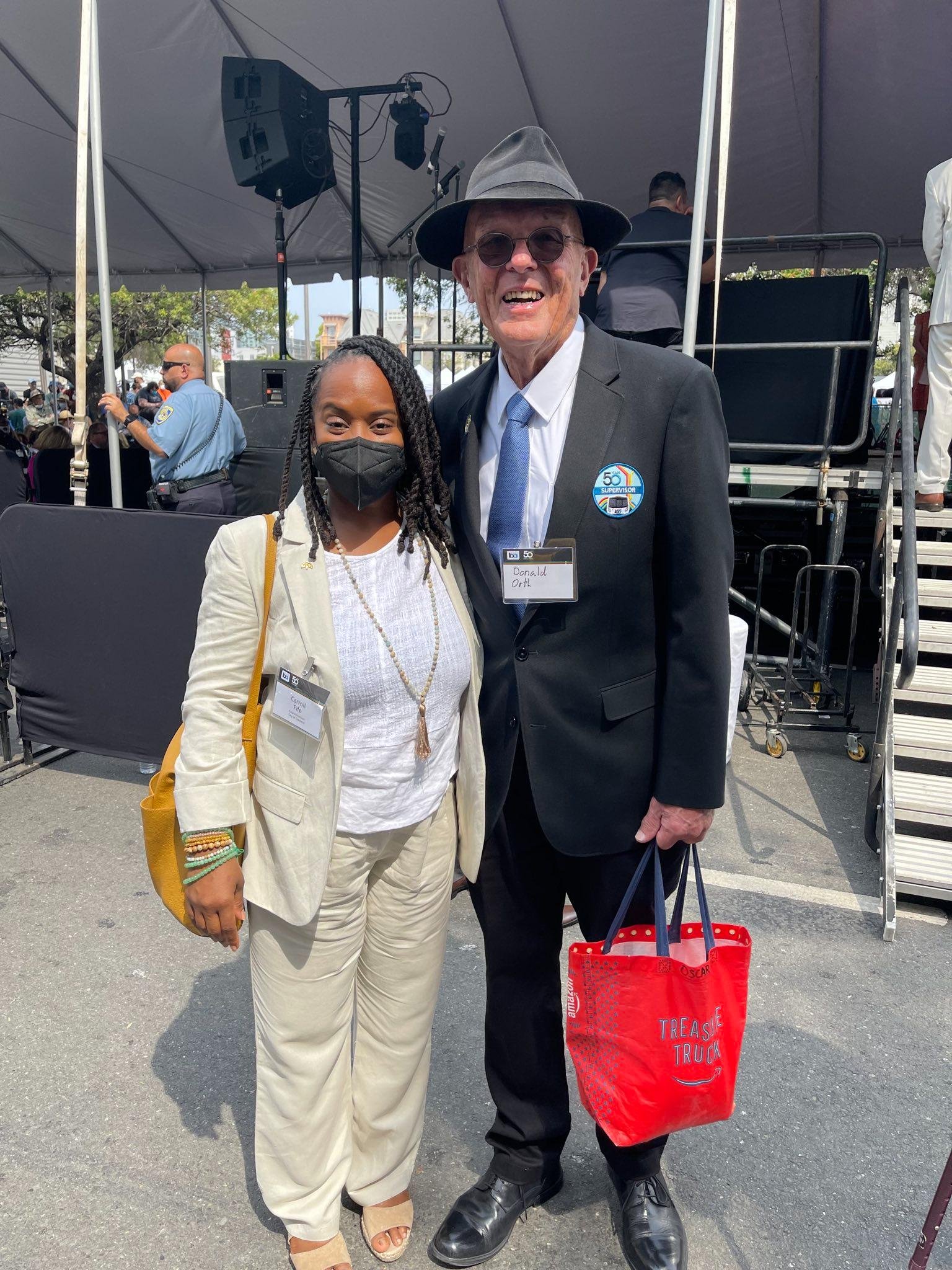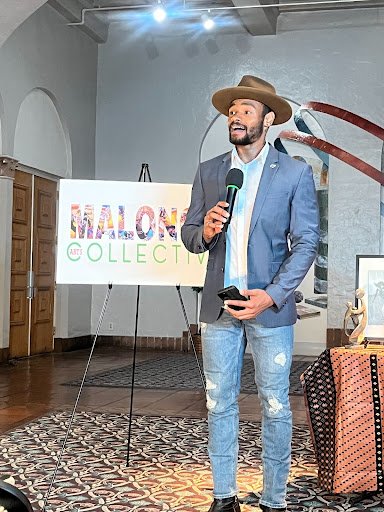A Deep Dive Into Measure Q For Low Rent Housing
Dear friends, family and constituents,
The City of Oakland is in a state of emergency in regards to so many things, particularly homelessness. We have thousands of people living on the streets in deplorable conditions. Over the past decade we have seen unprecedented development in Oakland and in that same timeframe we have had an explosion of displacement. We have many new market rate buildings, where a majority of longtime Oaklanders cannot afford to live, while tent-cities continue to grow. While I believe most people have readily agreed that we are in a crisis, our actions as a City have not been reflective of this reality.
To this end, this newsletter addresses possible municipal solutions to our housing crisis, both for long-term, low-rent housing as well as the encampment at Wood Street.
In service and solidarity,
Councilmember Carroll Fife
Items In This Newsletter
A Deep Dive Into Ballot Measure Q: Article 34 Authorization
Three Solutions To Wood Street
District 3 Public Safety Townhall on Oct 8th
West Oakland Farmers Market - Get The Word Out
In The Community
Update
A Deep Dive Into The Measure Q Article 34 Authorization
You might be wondering, why is there a ballot measure asking Oakland voters to authorize low-rent housing units? Why is this required, what will it do and what is this Article 34?
Let’s Start By Defining Article 34
Article 34 is a little known provision in the California Constitution that requires any public body, including the City of Oakland, to get voter approval before it can fund housing for low-income residents. Some of the exact language in the article is:
“No low rent housing project shall hereafter be developed, constructed, or acquired in any manner by any state public body until, a majority of the qualified electors… approve such project”
The California Constitution is the only constitution in the United States with this statute. No other state constitution requires voter approval for this particular type of housing.
Notice how the article also only requires a vote for “low-rent” housing, not median or moderate income. Some of you might already be catching on about who this article is meant to benefit and who it doesn’t. Let’s dig into the history of this article and it will become even more apparent.
A Brief History Of Public Housing - Going From White to Black
Article 34 was added to the California Constitution in 1950 and the decades leading up to its passing saw some big shifts in housing in America. The Great Depression of the 1930s saw mass unemployment and foreclosures. In order to support Americans during those desperate times, the federal government became involved, for the first time, in creating low-rent housing. In 1937, they started the United States Housing Authority and a year later, the Oakland Housing Authority was also formed.
Many subsidized low-rent housing projects were initially built for white families while intentionally excluding Black families. The Los Angeles Housing Authority first built public housing in white neighborhoods and Black families, who otherwise would have been eligible, remained homeless while units set aside for whites remained vacant. Only after early civil rights organizing did Black families gain access to public housing.
White residents eventually moved out of public housing with the aid of other New Deal programs and policies. There were federally insured mortgages that subsidized home purchases for white residents, including paying the mortgage if the owner defaulted. There were also government-guaranteed bank loans to developers so long as the subdivisions were white-only.
Black families on the other hand, paid higher rents in the private market than their white counterparts as landlords took advantage of the limited housing availability due to racial restrictions. Black families were also either excluded from opportunities to take out mortgages or had to pay steep interest rates and large down payments in order to do so. It is unsurprising that over the decades, public housing became increasingly synonymous with Black housing.
In the early 1950s, 43% of the 15,000 residents in Oakland’s permanent and temporary public housing projects were Black; one out of every eight Black residents in the city (Hella Town, 234). Ten years later, very few white residents lived in the increasingly underfunded projects (234).
Article 34 - A Reactionary Measure to Desegregation
With these dynamics in the background, the American Housing Act of 1949 came along. The American Housing Act expanded the scope of housing and public works projects by the federal government and explicitly banned racial segregation in public housing. All public housing developments had to be open to all, meaning that local white residents, as well as white residents within the projects themselves, could no longer lobby to keep Black families out of their neighborhoods.
There is wide consensus that Article 34 arose as a racist and classist reaction to the American Housing Act of 1949. Predominantly white voters sought to find other ways to keep Black people, as well as low-income people, out of their neighborhoods.
The campaign for Article 34 is said to have been sparked by events earlier in 1950 when residents in Eureka, CA tried to block a public housing project from being developed. They ultimately lost the case in the state Supreme Court, however the California Real Estate Association, now known as the California Association of Realtors, took notice and led the charge to place Article 34 on the November 1950 ballot.
The campaign played on the fears that public housing could result in projects with low-income, nonwhite residents being placed in white areas, resulting in the integration of the neighborhoods. Related to that, proponents played on fears that low-income projects would hurt the property values of a community generally but, in particular, if such projects contained nonwhite residents. The other argument used was against the government spending of taxpayer dollars on what were called ‘socialist’ programs.
By making public housing projects harder to build, the white electorate were effectively voting to keep their neighborhoods segregated. While the ballot initiative for Article 34 passed, it was by fewer than 50,000 votes and yet it continues to affect us today.
The Long Lasting Impact of Article 34
The LA Times reported that by 1969, nearly half of the public housing projects proposed in Article 34 elections — 15,000 units — were turned down and many housing agencies didn’t even hold elections, fearing that their plans would be rejected. A federal Department of Housing and Urban Development report at the time found that California had the nation’s largest population of poor people, but ranked 22nd in the amount of housing available for them. The report blamed Article 34.
Today in Oakland, the City’s Housing Element Annual Progress Report for 2020 found that the City has not met the demand for low-income housing. Only 43% of the Regional Housing Needs Allocation (RHNA) goals were met for very low- income housing, and 25% of the RHNA goals for low-income housing.
We are not only at a deficit, but according to the 2023-2031 RHNA goals, we need an additional 6,511 units of very low-income housing, and 3,750 units of low- income housing in order to meet demand. We need approximately 13,000 low-rent units in order to meet the increasing demand for affordable housing.
Because the City is not keeping pace with the increasing demand for affordable housing, Oakland renters are majority rent burdened, paying well over 30% of their income towards staying housed.
The increasing lack of low-rent housing also means that more and more people are being plunged into homelessness. There is no doubt that if Oakland had more low-rent housing, we would have less people sleeping on the streets.
Measure Q In Oakland - The First Step
So due to Article 34, the first step the City of Oakland has to take before planning for low-rent housing units is to get authorization from the electorate.
The City cannot even begin to consider funding sources, possible sites, or possible timelines without this authorization. After and if this authorization is approved, the City can begin to look into a wide variety of funding sources, possible existing or new sites, and can begin to allocate internal resources to this effort. Funding could come from a wide variety of sources, including federal or state grants, or through a local infrastructure bond.
And I know some fear that low-rent housing units mean the poorly maintained and built public housing of the past.
This definitely does not need to be the case. There are now examples of beautiful and inspiring social housing globally that we can draw from. Social housing is a newer model for state funded housing and while the definition varies depending who you are talking to, it can mean beautiful homes, where residents of various incomes live together and have control over how the spaces are maintained.
From Vienna to Brussels to Singapore, we now know that state bodies can execute beautiful and dignified state-funded social housing. It is a matter of political will and if Measure Q passes, I plan to push our public body here in Oakland to learn from the past, to not repeat old mistakes, and to use this opportunity to realize housing as a human right for all.
References
LA Times: A dark side to the California dream: How the state Constitution makes affordable housing hard to build By Liam Dillon
LA Times: Why it’s been so hard to kill Article 34, California’s ‘racist’ barrier to affordable housing By Liam Dillon
The Color of Law: A Forgotten History of How Our Government Segregated America by Richard Rothstein
Hella Town: Oakland's History of Development and Disruption By Mitchell Schwarzer. Chapter: Housing Injustice
2. Three Solutions To Wood Street
On multiple occasions, I have sounded the alarm and put forth possible solutions with regards to how the City of Oakland “manages” our unsheltered community, including using various City owned land to establish temporary housing solutions with supportive services, modeled after the co-governed site at 3rd Street and Peralta Street.
Unfortunately, I have been told that many of my ideas and solutions are not feasible, due to logistics and cost. However, it is my belief that what is truly not feasible and unacceptable is Oaklanders out in the streets with no roof over their heads being displaced even from outdoor areas. To this end, the humanitarian crisis that we’ve watched unfold at Wood Street has once again prompted me to raise a few possible solutions:
The North Gateway Parcel: I still encourage a plan to use this large City-owned parcel to provide a humane living community with supportive services for at least 1,000 individuals. The City administration has stated the cost for this undertaking would be too high, that the site is committed for other purposes, and that there are environmental hazards. However, I would argue that the cost of “managing” homelessness instead of actually solving it is higher, both in terms of human life and monetarily.
Beach Street: The City has been leasing this parcel from Caltrans to serve as a Safe RV parking site. I want to install a homeless intervention site, in a way that doesn’t displace existing community members, with Lifelong Medical serving as a service provider.
The County Social Services Building: Securing this large vacant building and creating permanent housing for our unhoused neighbors.
Many of the major issues in our City are connected to this crisis; homelessness is a health issue, a public safety issue, and much more. As such, we have to completely change our views and approach with regards to this crisis. To be clear, this is not a failure that is limited to the City—Alameda County as well as the State of California has also failed us. We have NOT received the level of support needed to implement more permanent affordable housing solutions, which is why, among other things, I will be calling for the State to reinstate the Redevelopment Agency.
We have a duty to try any and everything to make our City truly equitable and the most impactful way to do that is to ensure every resident has a stable place to call home.
Events
3. District 3 Public Safety Townhall on Oct 8th
My office will be hosting a townhall to hear and discuss public safety concerns and solutions that affect each neighborhood. Please register here as the event will be limited to 100 people due to building capacity.
When: Saturday October 8th at 10am - 12:00 pm
Where: Mount Zion Missionary Baptist Church 1203 Willow St., Oakland, CA 94607
Masks Required
If you are not able to attend in person, we will be live-streaming and you tune in through my Facebook, Twitter or YouTube pages.
4. West Oakland Farmers Market Continues - Get The Word Out
The West Oakland farmers market continues! Please share with the community so the word gets out that there is now a farmers market serving our community here in District 3.
Open Sundays, year-round, 10am to 2pm located on Peralta Street between 18th and 20th Street. EBT/WIC accepted.
Featuring local growers, fresh cut flowers, gourmet mushrooms and microgreens, bakeries including Starter and Rize Up, Soul Blends and Bass Line coffee, juices, pasture raised meats from Llano Seco Ranch, Chavez lamb and Prather Ranch Meats, Alexandre organic A2 milks, eggs and dairy products, local honey, fresh seafood and oysters, arts and crafts, food trucks and street foods featuring Cuban food, smash burgers, BBQ oysters, Papa’s dumplings, soul food and more! Live entertainment each week including featured works and open mic with Nomadic Press.
In The Community
A round-up of some images from the past month, including from when I gave the keynote speech at Holy Names University Convocation, the PUSH film screening at Grand Lake, a weekend of cultural events at the Malonga Center, and BART’s 50th Anniversary.


